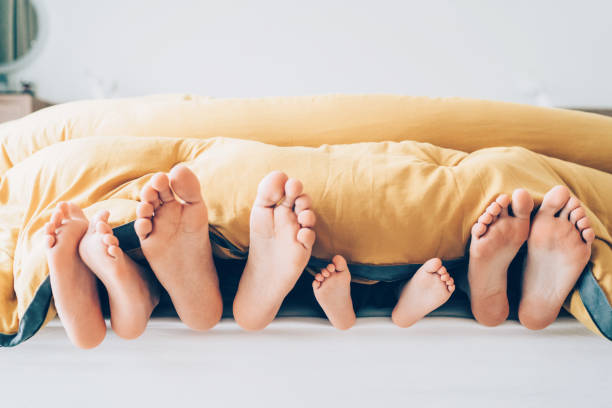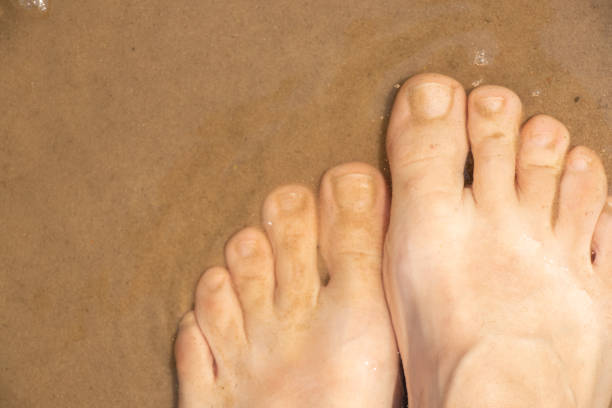Yellow On Bottom Of Feet: Everything You Need To Know

Generally speaking, yellow skin on your feet is nothing to be concerned about. The intense pressure and friction that feet experience can result in the growth of thick, discolored skin. Yellow feet can occasionally be a symptom of a deeper issue.
Find out what causes yellow feet and when you should visit a doctor by continuing to read.
Table of Contents
Causes of Yellow Feet
Calluses
Calluses are a buildup of tougher, dead skin, whether they are on a small patch of skin or the entire bottom of your feet. It actually develops in response to excessive pressure on your skin that could otherwise cause it to break as your body attempts to protect itself from harm.
While some calluses may appear rough and dry and possibly cause cracked heels, other areas may feel rubbery and appear yellow. Our arteries and capillaries carry oxygenated blood, which is what gives our skin its healthy color. Thick calluses conceal and cover this, resulting in thickened yellow patches.
Your Diet
Skin yellowing can be caused by both carotenemia and anemia. Anemia is a condition in which the body lacks enough red blood cells to adequately transport oxygen to its tissues. The skin can appear pale and yellow due to insufficient hemoglobin in red blood cells, a lack of blood cells in general, and a general redistribution of blood cells to vital organs rather than the skin surface.
The palms and soles of the feet turn yellow in carotenemia due to elevated levels of carotenoids in the body. Aside from diabetes, liver, kidney, thyroid, and cholesterol problems, which make it difficult for the body to eliminate the carotenoids as bodily waste, this could also result from excessive and prolonged consumption of foods high in carotene (typical foods with an orange color, like carrots).
Raynaud’s
Our feet can quickly become pale and yellow when our blood vessels constrict and restrict the blood flow to them. This is what happens with Raynaud, with exposure to the cold and emotional stress serving as its main causes. Compared to the other causes of yellow feet, this one affects patches at both the tops and bottoms of the feet and has a tendency to be much more patchy.
Jaundice
A waste substance called bilirubin is created when your blood cells naturally degrade in the body. Your skin and other parts of your body start to turn yellow when too much bilirubin accumulates in your body.
Jaundice is a potentially serious condition that necessitates a trip to the doctor because it is frequently accompanied by other underlying issues like infections, liver failure, and more. Check your eye whites if you’re concerned about jaundice because jaundice frequently causes these to turn yellow.
Carotenemia
When your bloodstream contains an excessive amount of carotenoids, you develop carotenemia. In many vibrantly colored vegetables and fruits, there are substances called carotenoids that are yellow in color. The natural color of your skin is affected by these ingredients, which are a regular component of a balanced diet. The typical method by which carotenoids leave your body is through sweat, feces, urine, or skin oils.
However, if an excessive amount accumulates in your blood, it can cause your skin to turn yellow. The areas of your hands and feet with this discoloration tend to be most noticeable.
Carotenemia can result from a variety of factors, including the foods you eat and specific medical conditions.

Other Causes
Conditions that interfere with how your body uses and eliminates carotenoids can also cause carotenemia. Common conditions that might do this include:
• high cholesterol
• hypothyroidism
• diabetes
• kidney conditions
• liver conditions
All of these ailments can lead to a buildup of carotenoids in your bloodstream, where they may eventually start to affect your skin.
Remember that carotenemia and jaundice, both of which have very similar symptoms, can be caused by liver diseases. A quick blood test can help your doctor identify the specific cause of your yellow skin, especially if you have a liver condition.
What About Yellowing Toenails
The most common reason for yellow discoloration of your toenails is a fungal nail infection. Without treatment, fungus infections deteriorate over time, and you’ll soon notice that your toenails are turning yellow or white, becoming brittle, crumbly, or thick, and even lifting up and separating from the nail’s base.
When to See a Doctor
When it affects multiple body parts, yellow skin can occasionally be a sign of a more serious medical condition.
People should see their doctor if they experience the following symptoms in addition to yellow skin:
• black stool
• blood in the stool or vomit
• chest pain
• confusion
• dizziness
• fatigue
• fever
• headaches
• severe stomach pains
• shortness of breath
• unexplained bruising or bleeding
The most likely causes are a callus or a high intake of foods high in carotenoids if a person only experiences yellow feet as a symptom. A dietician can assist a person in creating a more balanced diet, while a podiatrist can treat calluses and other foot issues.
Treatment for Bottom of Feet Yellow
• wearing comfortable, well-fitting shoes.
• Use padded or insulating shoe inserts.
• In warm, soapy water, gently remove the callus.
• filing down thick skin with a pumice stone.
• applying callus-removing medication to the foot.
The Bottom Line: Best to Consult Doctor
Depending on what causes this discoloration, a person’s prognosis with yellow feet will vary. Once the underlying issue is resolved, the feet will typically return to their normal color.
It is crucial that a person sees a doctor right away if they have any concerns or exhibit other symptoms because yellow feet can occasionally be an indication of a more serious problem. Therefore, if you experience any additional symptoms, it is best to consult your doctor.
Tags: Yellow On Bottom Of Feet